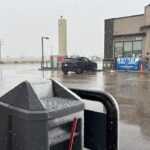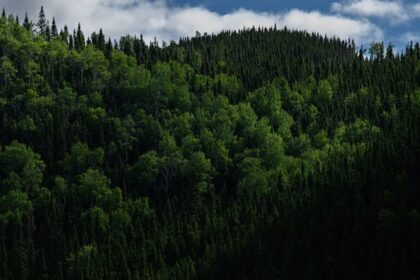BaseballThe Seattle Mariners defeated the Toronto Blue Jays 3-1 to capture Game 1 of the American League Championship Series.George Springer’s 1st-pitch home run only offence Toronto can musterThe Canadian Press · Posted: Oct 12, 2025 9:59 AM EDT | Last Updated: 2 hours agoToronto’s George Springer strikes out in the eighth inning against Seattle in Game 1 of the American League Championship Series. Springer hit a home run in the first inning for the Jays’s only run in a 3-1 loss. (Getty Images)The Seattle Mariners struck first in the American League Championship Series on Sunday with a 3-1 win over the Toronto Blue Jays at Rogers Centre.Cal Raleigh hit a solo shot in Seattle’s two-run sixth inning. Jorge Polanco had a pair of RBI singles and Bryce Miller (1-0) threw six strong frames for the win.Andres Munoz worked a clean ninth inning for the save.George Springer put a charge into the sellout crowd of 44,474 with a leadoff homer for the Blue Jays. Anthony Santander singled in the second inning for Toronto’s only other hit.Game 2 in the best-of-seven series was scheduled for Monday afternoon in Toronto.Toronto starter Kevin Gausman (1-1) retired 15 batters in a row after a shaky first inning. Raleigh, who hit 60 homers in the regular season, launched a 420-foot blast to tie the game.Gausman was pulled after a two-out walk to Julio Rodriguez. Brendon Little came on and gave up an RBI single to Polanco, who also drove in Randy Arozarena with an insurance run in the eighth.Blue Jays right-fielder Nathan Lukes was removed from the game in the fourth inning with a right knee contusion. He fouled a ball off his leg in the opening frame.The Blue Jays had three days off between games after eliminating the New York Yankees last Wednesday. The Mariners arrived in Toronto late Saturday after a 15-inning Game 5 win over the Detroit Tigers on Friday night.The series will shift to Seattle’s T-Mobile Park for Game 3 on Wednesday.After averaging 8.5 runs per game in the division series, the Toronto bats were quiet. The loss ended the Blue Jays’ six-game home winning streak.
Blue Jays bats go cold as Mariners take Game 1 of the ALCS












